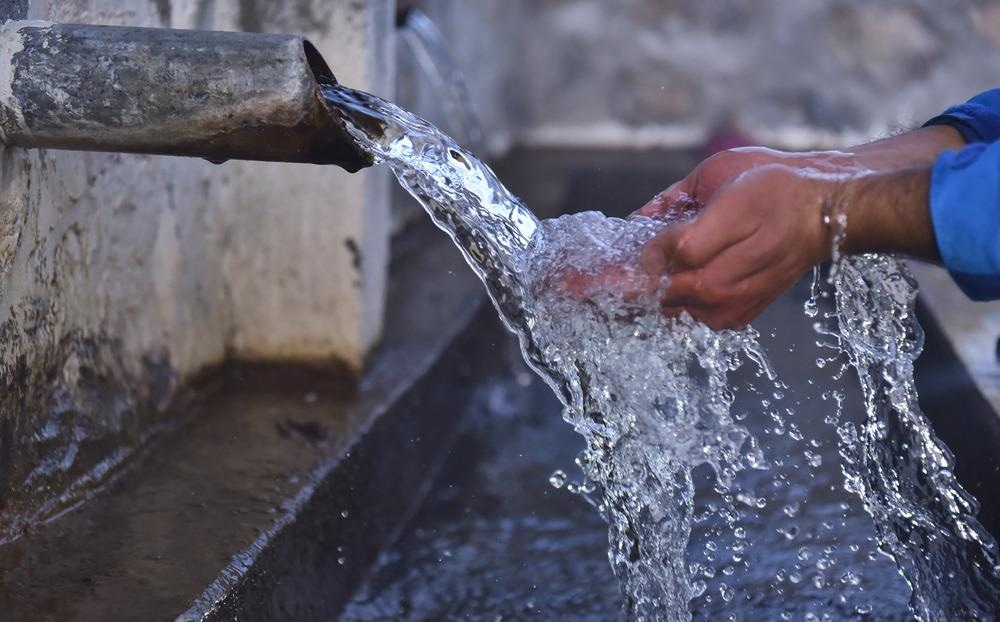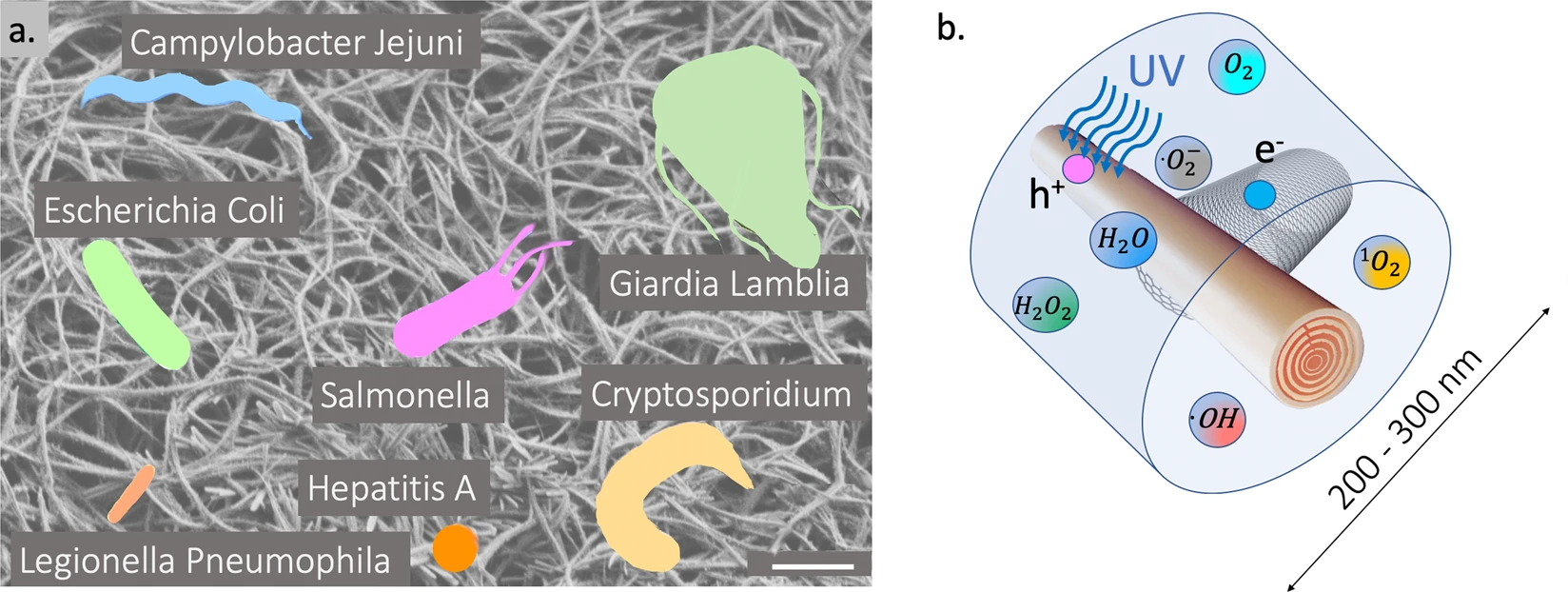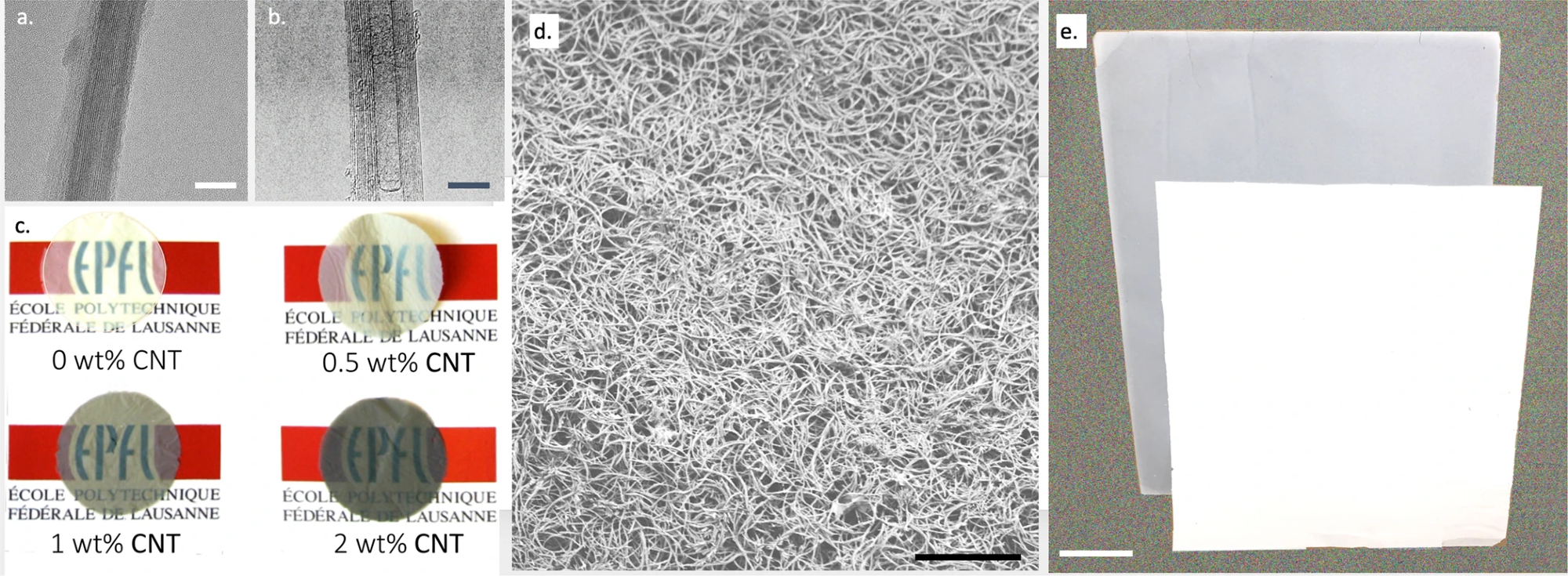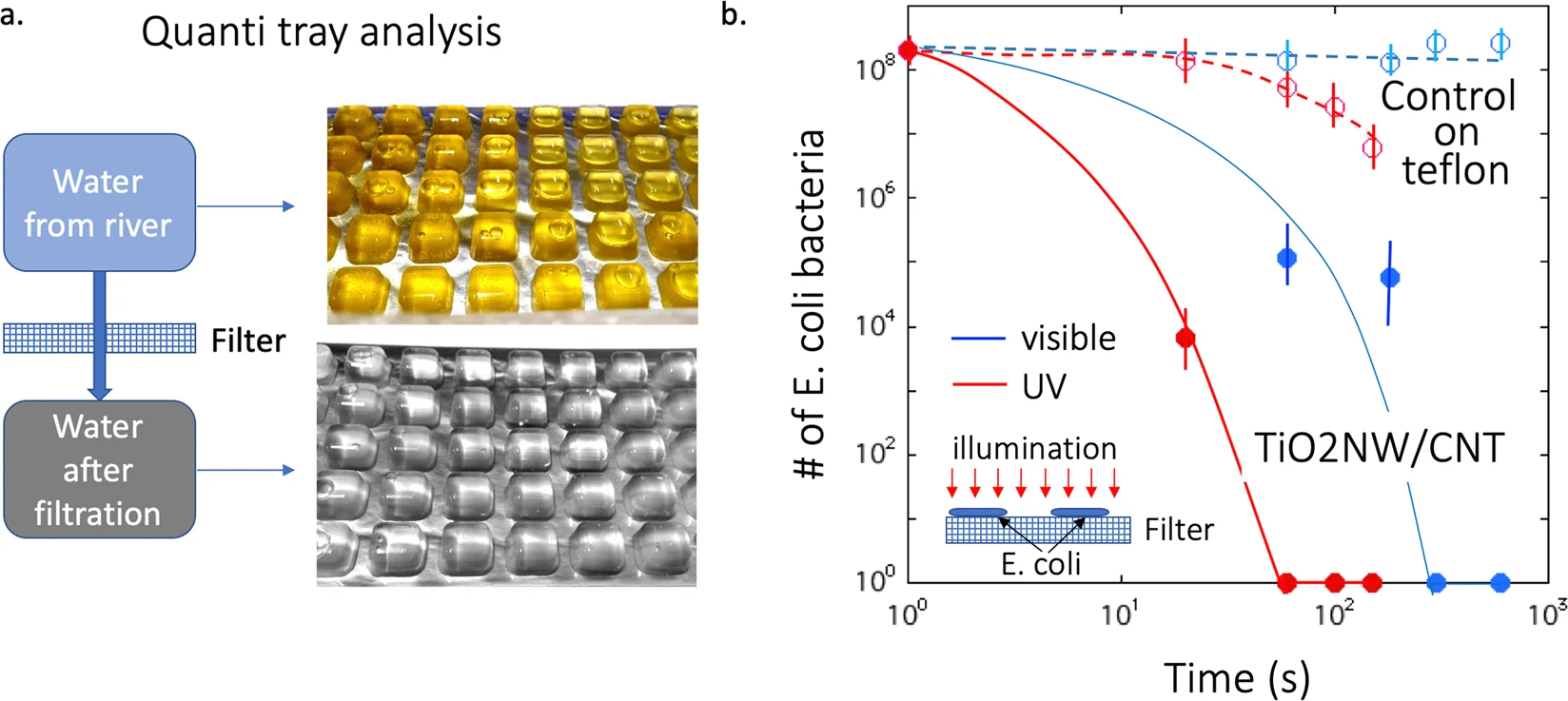A titanium dioxide nanowires (TiO2NWs)-based filtration system capable of detoxifying water contaminated by microbes and toxins using just sunlight has been suggested in npj Clean Water.

Study: Solar water purification with photocatalytic nanocomposite filter based on TiO2 nanowires and carbon nanotubes. Image Credit: emerald_media/Shutterstock.com
Lack of Clean Water – A Serious Threat
Accessibility to clean drinking water is critical for survival. Despite advancements in clean water accessibility, countless regions throughout the globe are continually subjected to environmental threats and complain about the lack of hygienic facilities.
This issue may be particularly notable in nations where hygienic facilities are lacking, such as in isolated, rural, or war-affected regions, including communities with limited access to electricity, making modern filtration technologies impractical.
To stay hydrated contaminated water is consumed, which may contain excrement, worms, dangerous microorganisms, viruses, and other contaminants in such situations. Consumption may induce gastrointestinal discomfort, nausea, migraine, unpleasant diarrhea, and exhaustion, and also result in death. It is thus critical to develop an efficient technique to eradicate them so that fresh, hygienic, and economical drinkable water may be provided affordably.

Figure 1. Filtering and sterilization principles. a A representative selection of microorganisms, which could contaminate the drinking water. They are trapped at the surface of the TiO2NWs/CNTs composite - based filter. The sketches of the pathogens are shown on the same scale as the filter material, except for the Hepatitis A virus, the diameter of which is of 24 nm. b The principle of ROS generation at the surface of TiO2NWs upon UV illumination. Since the lifetime of ROS (OH., H2O2 and O2.−) is short, the volume of action is also indicated. Incorporation of CNTs into the TiO2NWs/CNTs nano-construct efficiently separates electron-holes pairs photo-generated within TiO2NWs, thus reducing their recombination rate and consequently increasing the efficiency of photocatalysis. (The scalebar in a) is 1 μm). © Horváth, E., et al. (2022)
Is Water Purification Possible Using TiO2 and Sunlight?
One possible option is to employ photocatalytic filtration systems. These systems comprise nano metered topologies of titanium dioxide operationally dependent on sunlight.TiO2 is a semiconductor with a large bandgap that effectively captures the ultraviolet (UV) portion of the light spectrum. Owing to their substantial effective surface area, nano-sized variants of TiO2, such as TiO2 nanoparticles (TiO2NPs) or TiO2 nanowires (TiO2NWs), are significant for conventional photocatalytic applications.
Effectiveness of Photocatalytic Sunlight Based TiO2 Systems
TiO2 absorbs sunlight, particularly the rays in the UV spectrum, and produce an electron hole-pair. This pair in the presence of water and oxygen generates reactive oxygen species (ROS).
ROS produced on the exterior of photo-excited TiO2NPs before degradation may easily penetrate and react with organic pollutants and microorganisms if they are present. Thus, photocatalytic TiO2 nanoparticle structured frameworks provide an effective disinfection method against aquatic microbes and infections due to their exceptional porous structure, effective sunlight-induced generation of ROS, and a broader contact region.

Figure 2. From nanowires and nanotubes to large area filter paper. a, b HR TEM images of the essential individual nano-structural components of the composite filter material, i.e., a single TiO2NW and a single multiwalled CNT, respectively. The length of both nanoelements can reach several micrometers (The scalebars are 10 nm).; (c) Photos of selected samples of TiO2NWs-based filter paper with various wt% contents of CNTs, which alters their transparency (the diameter of the filter paper disc is of 20 mm); d Characteristic SEM image of the filter paper (The scalebar is 5 μm is 5b, (e) Photo of large area filter papers synthesized from pure TiO2NWs (front) and containing 1 wt% content of CNTs (grayish). (The scalebar is 10 cm). © Horváth, E., et al. (2022)
Limitations
Despite the potential advantages and several benefits of such a strategy, no functional sunlight-operated TiO2-based systems have been designed. The current predicament can be partially explained by technological challenges that are directly connected to titania nanoparticles. More particular, following successful photocatalytic cycling in slurry-type reactors, it is challenging to reuse and recycle TiO2NPs (20–100 nm in size), disseminated in a suspension containing the contaminants.
To address this issue, numerous approaches for immobilizing TiO2NPs on diverse platforms have been devised. However, TiO2NPs immobilized in the category of dense nanosheets and porous coverings frequently exhibit tensile and structural abnormalities, as the granular depositions tend to disengage and split apart when subjected to even modest abrasion and shear stresses.
The latest article described a specialized chemical approach for manufacturing a solar water filtration system, its core active constituents, and its complete characterization in terms of photo-generation of ROS–towards the eradication of a diverse variety of hazardous compounds and microbes from drinking water.

Figure 3. Quanti-tray analysis of the efficiency of the filtration of the device and the E. coli bacteria survival. a The presence of coliform bacteria in the 100 times diluted river water is indicated by the yellow color of the Quanti-tray (upper part of the image), whereas the colorless Quanti-tray confirms that no bacteria passed through the TiO2NWs/CNTs filter (lower part of the image); (b) The bacterial inactivation performance of the TiO2NWs/CNTs filter upon UVA and visible light illumination as compared to the control surface of the humid Teflon filter. After 30 sec of illumination with UVA light and after more than 300 sec when exposed to visible light, the concentrations of bacteria are below the detection limit. Inset: schematic representation of the experiment showing the location of the bacteria-containing spots on the filter’s surface. © Horváth, E., et al. (2022)
Research Findings
The hybrid filter system, notably, successfully retained aquatic pathogenic microbes due to its nanostructured pores. Furthermore, the filter cleaned and disinfected the toxic water by ROS activity.
The ability of the designed filtration device to efficiently warm the influent water owing to the photo-thermal influence is also an essential feature. This practical attribute is connected to the existence of CNTs in the filtration layer's microstructure. These carbon nanorods with a metal nature capture a broad spectrum of light and heat the filters and fluid in its direct vicinity, allowing sterilization by increased temperatures.
A durable nitroxide compound, 4 Hydroxy 2,2,6,6-tetramethylpiperidine-1-oxyl (TEMPOL), was employed as a target analyte for the photo-generated ROS to test the photocatalysis of ROS. The TEMPOL reactive channels with ROS resulted in improved structural modifications. Changes in the intensity of the ESR spectra were also measured while the filter was exposed to sunlight. The strength of the TEMPOL ESR signal reduced significantly with time after it passed through the filter, as a result of the ROS-induced damage.
The photo-thermal water purifier created in this study appears to be an appealing concept for worldwide commercial applications, enabling effective water filtration in the lack of specialized infrastructure.
Reference
Horváth, E., et al. (2022) Solar water purification with photocatalytic nanocomposite filter based on TiO2 nanowires and carbon nanotubes. npj Clean Water 5(1). 1-11. Available at: https://www.nature.com/articles/s41545-022-00157-2
Disclaimer: The views expressed here are those of the author expressed in their private capacity and do not necessarily represent the views of AZoM.com Limited T/A AZoNetwork the owner and operator of this website. This disclaimer forms part of the Terms and conditions of use of this website.